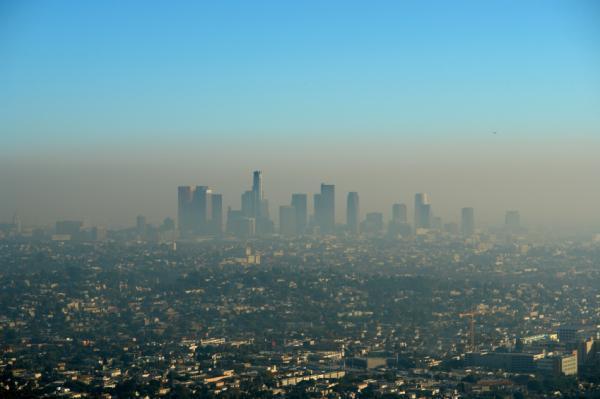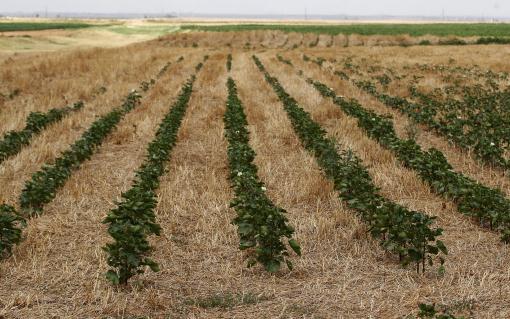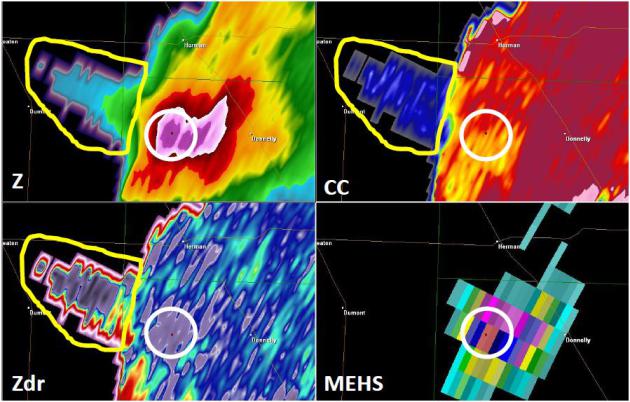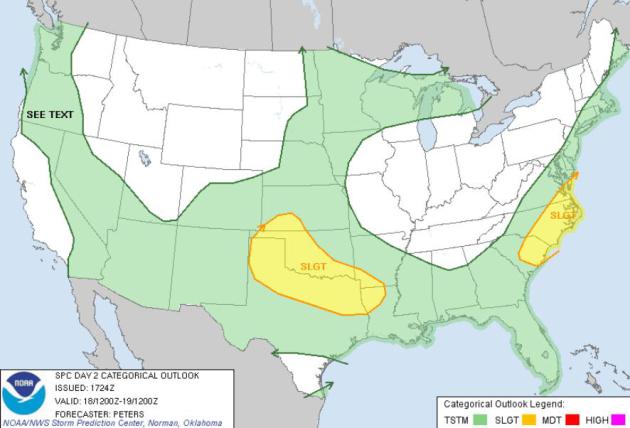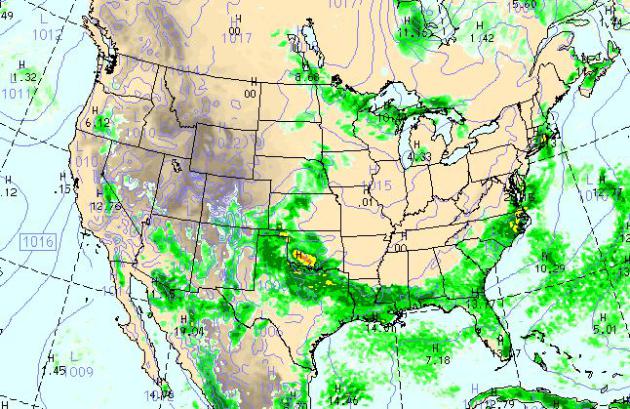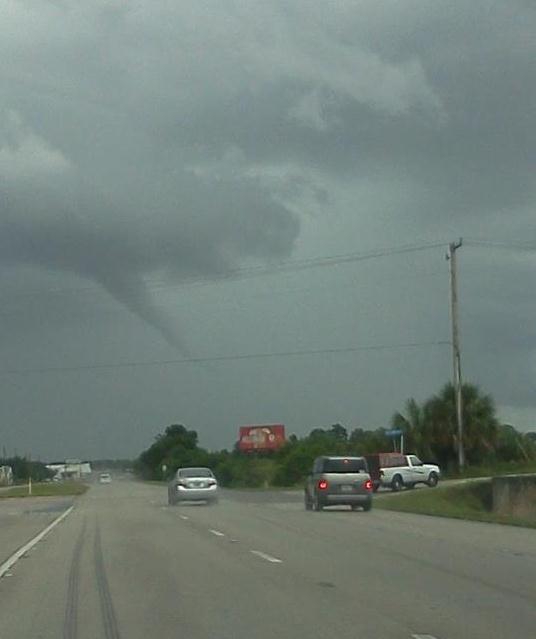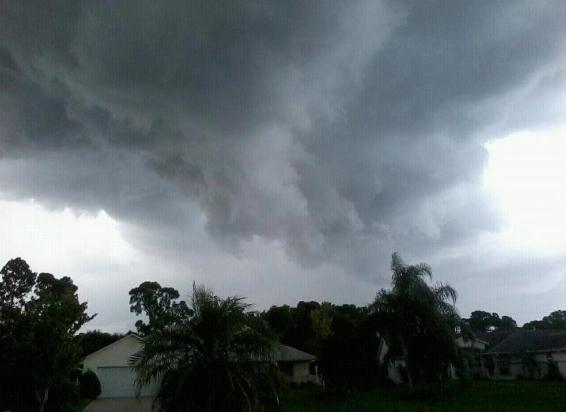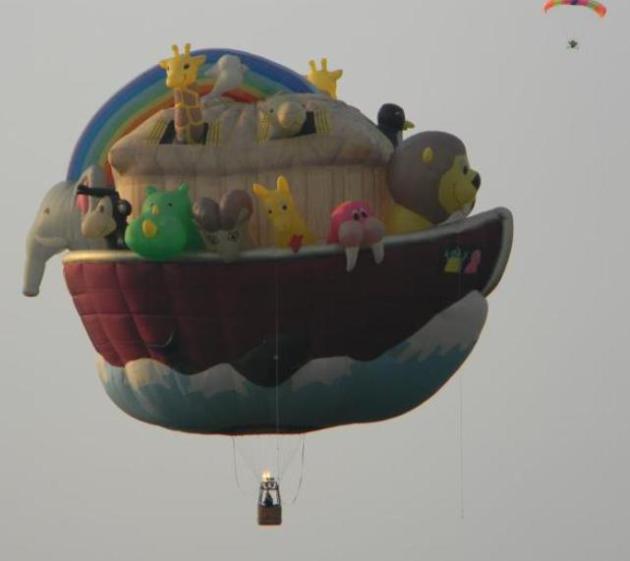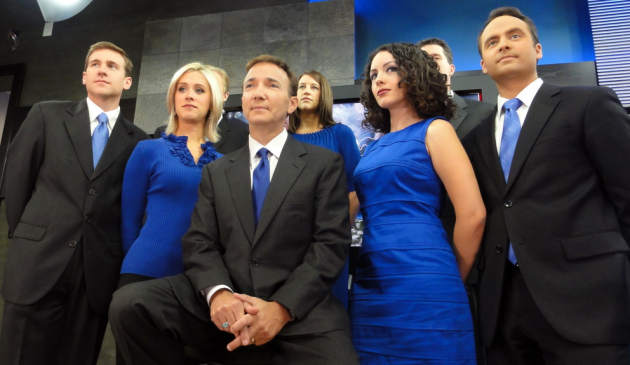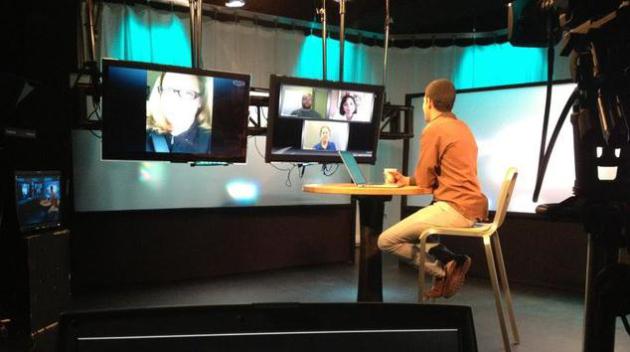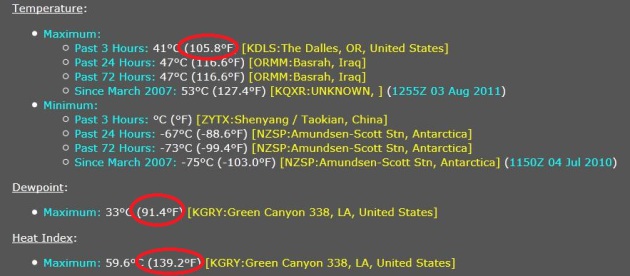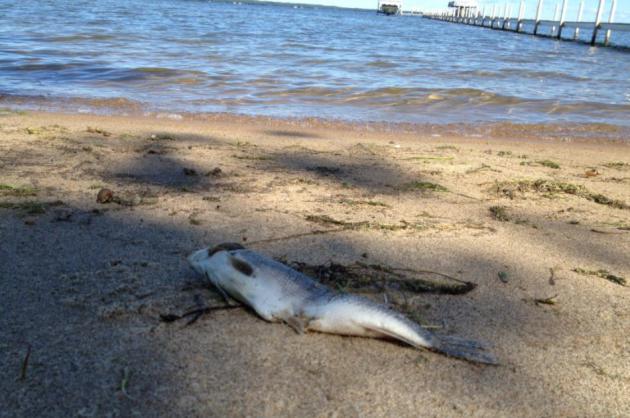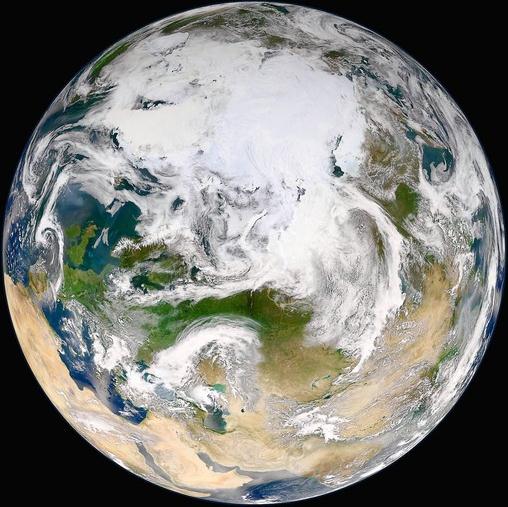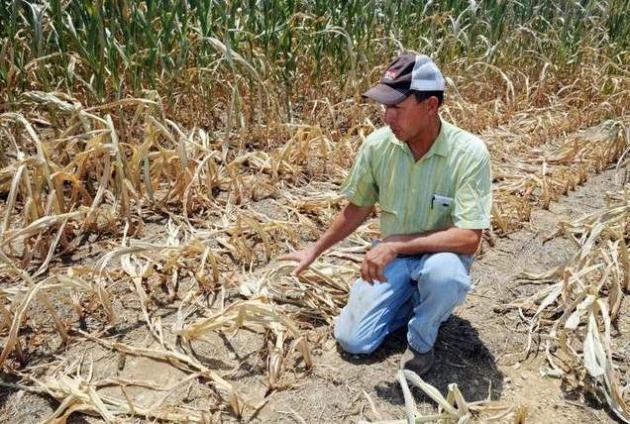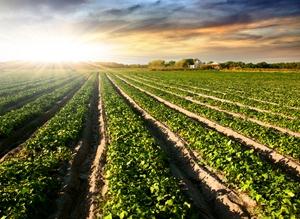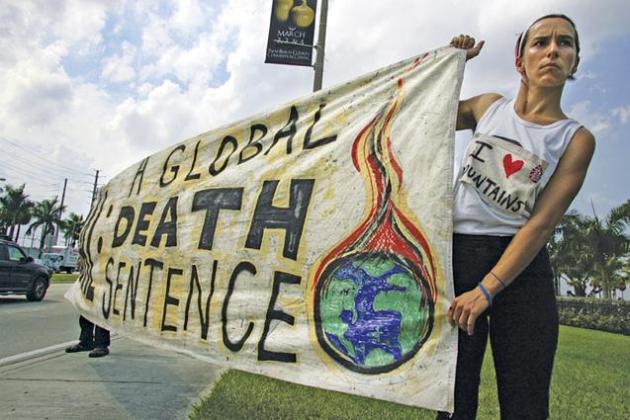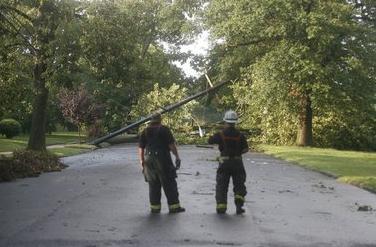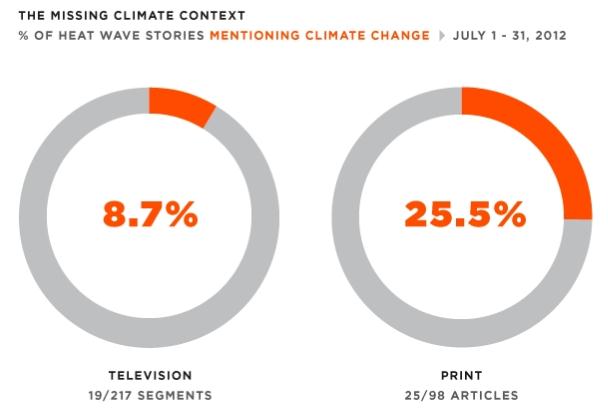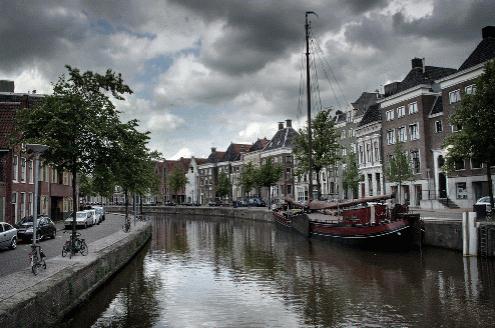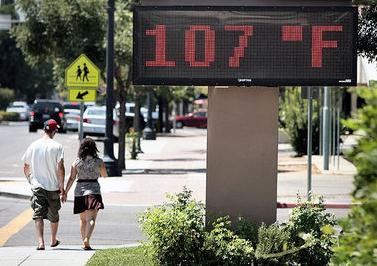7% of America's water is reused/recycled. An estimated
16% is wasted through leakage and degrated infrastructure. Details in a New York Times Op-Ed below.
"...
And let's acknowledge this isn't just about data. Somewhere
along the way, what started out as a scientific debate turned into a
political, even ideological, spat. High-handed advocates for slashing
our use of fossil fuels backed extreme restrictions that would damage
the world's developed economies — America's included. Skeptics pushed
back, as aggravated by the righteousness of the climate change
Cassandras as by their doubts about the underlying — and incomplete —
science..." - from a Chicago Tribune Op-Ed below.
A Chilly Spell. Meteorologists call this a
"correction", coming after the warmest July on record for most of the
USA. A dose of brisk, Canadian air was probably inevitable, and we came
close to a rare August frost up north. More details from Dr. Mark Seeley
in this week's edition of his
WeatherTalk Blog: "
August
16th brought a record-tying low temperature to International Falls
with a reading of 41 degrees F (tied 1958). But more significantly a
strong Canadian high pressure ridge brought the coldest August 17th
(Fri) since 1963 to many parts of the state. New record low
temperatures were set at: Silver Bay (34 F); Hibbing (34 F); Crane Lake
(36 F); Princeton (37 F); Austin (38 F); and Waseca (39 F). In
addition many observers reported tying their record cold low
temperatures on August 17th including, 36 degrees F at Fosston (tied
2007), 37 degrees F at Little Falls (tied 1999); 37 degrees F at Hallock
(tied 1904); and 39 degrees F at Park Rapids (tied 1896). For many
these were the coldest readings since May 16th last spring."
 First (Average) Frost
First (Average) Frost. Much of central and northern Minnesota experiences the first frost of the season
by September 30, but temperatures don't usually dip below 32 F. in the
metro until the first or second week of October. Most of the southern
USA
remains frost-free until mid November.
Latest Drought Monitor. The drought is holding
pretty much steady across the state (not increasing in coverage or
intensity). Although soil moisture is in good shape from the Twin Cities
to St. Cloud, Brainerd and Duluth, far southern, southwestern and
northwestern Minnesota is in moderate to severe drought. In fact a
little more than a third of the state is in a moderate drought, or
worse. The latest Drought Monitor is
here.
"Don't Waste The Drought". Here are a few (staggering) statistics about water usage and waste in an Op-Ed at
The New York Times: "...
Our
nation’s water system is a mess, from cities to rural communities, for
farmers and for factories. To take just one example: Water utilities
go to the trouble to find water, clean it and pump it into water mains
for delivery, but before it gets to any home or business, leaky pipes
send 16 percent — about one in six gallons — back into the ground. So even in the midst of the drought, our utilities lose enough water every six days to supply the nation for a day. You
can take a shorter shower, but it won’t make up for that. The good
news: There are a number of steps that together can change, gradually
but permanently, how we use water and how we value it. Some can be
taken right now. The average American uses 99 gallons of water at home
each day. In the summer, half of that water goes to our lawns, way more
than needed."
Photo credit above: "
Cotton plants out of the range of an
irrigation machine are pictured in Hydro, Okla, Thursday, Aug. 16, 2012.
Drought conditions across Oklahoma have expanded and worsened despite
recent rainfall in the state, according to the U.S. Drought Monitor
report released Aug. 16, 2012." (AP Photo/Sue Ogrocki)
Comfortable Weekend - Summer Rerun Next Week. The
ECMWF keeps us in the 70s for highs into Tuesday, but a warm-up is still
on track by the middle of next week, a few days of 85-90 likely the
latter half of next week.
Weekend Details: Meteogram.
Temperatures today and tomorrow will be comparable; highs mostly in the
mid 70s with low dew points. Expect a light northwest breeze today, the
best chance of a shower later this afternoon north of Lake Mille Lacs.
Sunday looks drier and a bit sunner with a light north breeze.
Temperatures are in Celsius, by the way. No cause for panic.
Power Of New "Dual Polarization" Doppler Radar In Diagnosing The August 15 Hailstorm in Stevens County. The local Twin Cities NWS has a
great explanation
of the new technology that helped meteorologists get a better handle of
hail size near Donnelly (where 1.75" diameter hail fell). It's a big
step forward, technologically.
Weather Gone Wild. Here's an excerpt of an excellent cover story in this month's
National Geographic Magazine: "...
There’s
been a change in the weather. Extreme events like the Nashville
flood—described by officials as a once-in-a-millennium occurrence—are
happening more frequently than they used to. A month before Nashville,
torrential downpours dumped 11 inches of rain on Rio de Janeiro in 24
hours, triggering mud slides that buried hundreds. About three months
after Nashville, record rains in Pakistan caused flooding that affected
more than 20 million people. In late 2011 floods in Thailand submerged
hundreds of factories near Bangkok, creating a worldwide shortage of
computer hard drives. And it’s not just heavy rains that are making
headlines. During the past decade we’ve also seen severe droughts in
places like Texas, Australia, and Russia, as well as in East Africa,
where tens of thousands have taken refuge in camps. Deadly heat waves
have hit Europe, and record numbers of tornadoes have ripped across the
United States. Losses from such events helped push the cost of weather
disasters in 2011 to an estimated $150 billion worldwide, a roughly 25
percent jump from the previous year. In the U.S. last year a record 14
events caused a billion dollars or more of damage each, far exceeding
the previous record of nine such disasters in 2008."
Photo credit above: "
Supercell thunderstorm near Glasgow, Montana." Photograph by Sean R. Heavey, Barcroft Media/Landov.
Saturday Severe Risk. The soggy remains of a strong
push of Canadian air will set off severe storms over the southern Plains
and the Carolinas later today. Map above: SPC.
Today's Weather Map at 4 pm. The WRF model, valid at
4 pm today, prints out a few instability showers from northern
Minnesota into the U.P. of Michigan, strong T-storms from near Oklahoma
City and Dallas to New Orleans and the Outer Banks of North Carolina.
Best photos from Friday around the USA:
A Turbulent Sky. Thanks to Payy Ingalls for sharing this
terrific photo; details: "
I
took this photo, today, 8/16/12 in West Plains, MO (Howell County) at
approximately 4:15 p.m. We had a severe thunderstorm warning. :)"
Hail And High Water. Brandon Wyatt snapped this
photo in Bellemont, Arizona Friday. Monsoon season brings torrential rains, an occasional haboob, and plenty of hail: "
Crazy thunderstorm in Bellemont AZ. Dropped a lot of hail."
.
Risk Of A Funnel Cloud. A funnel is a tornado where
the circulation has not reached the ground. This one was captured near
Suntree, Florida by Janna Griffin via the Melbourne, Florida office of
the National Weather Service. Photo via WeatherNation TV's
Facebook page.
Rotating Wall Cloud. Here's another
great photo; this one taken near Sebastian, Florida by Ariel Silvana Dato.
One Wild Balloon. Bruce Mitchel snapped this
photo of a very creative hot air balloon near Mechanic Falls, Maine.
"Ask Paul". Weather-related Q&A:
Subject: Hurricanes, cyclones and tornadoes
Sent from my iPad
Paul:
What is the difference between these three types of storms?
Laurie Auger
Andover
Laurie - it can get
confusing, I grant you that. Hurricanes (called cyclones in the Indian
Ocean) are huge storms that form over warm oceans, gathering their
strength from warm ocean water. They literally starve to death and
fizzle once they pass over land. They can be 400 miles in diameter, last
days, even weeks, with sustained winds near the "eye" from 74-160 mph.
All storms were called "cyclones" up until roughly the 1950s, any area
of low pressure. Tornadoes were also called cyclones up until the mid
50s, when warnings were first issued by government forecasters.
Tornadoes form under rapidly spinning (severe thunderstorms), brief,
violent whirlwinds that last 5-15 minutes on average, and affect a tiny
percentage of any given county. You don't hear the expression
"cyclone" much any more; most meteorologists refer to these broad,
500-100 mile wide systems as storms or low pressure systems. Thanks for a
good question!
Unbelievable DUI Laws And Punishments Around The World. You think the USA is tough on drunk driving? We go (too) easy, compared to the rest of the world.
Beatthetraffic.com has a post that highlights a few countries and how they handle a first offense for drinking and driving. Here's an excerpt:
Malaysia:
The Driver is jailed and if married, his wife is jailed too. (
if this was in the US, it could explain the high divorce rate 
South Africa:
A 10 year prison sentence and the equivalent of a $10,000 fine.
Turkey:
Drunk drivers are taken 20 miles outside of town by police and are forced to walk back under escort
Norway:
Drunk drivers are automatically jailed for 3 weeks at hard labour
coupled with a license suspension for one year. Second offence within
five years – license revoked for life.
Finland & Sweden:
Automatic jail for one year of hard labor.
Invisible Bike Helmet Keeps Riders Safe, Looking Cool (Video).
Technology will save us, especially if we're riding our bikes and have
this new gizmo on our collar. It's actually a very slick concerpt, as
described at
mashable.com: "
How
often have you, or someone you know, eschewed a bicycle helmet to look
cool at the expense of safety? Well, gamble with a traumatic brain
injury no more. Two Swedish inventors created an invisible helmet called
Hövding, and it doesn’t involving using any Harry Potter invisibility cloak
magic, or even plastic. The helmet is actually a thick collar — like
one you might see on a heavy winter jacket — with an airbag hood
underneath that deploys should you get in an accident."
"
Reinvent The Toilet Fair" In Seattle. No, you can't make this stuff up - but it's for a good cause, improving sanitation for billions of people.
Gizmag.com has the story; here's an excerpt: "
In
an effort to improve conditions for the more than 2.5 billion people
worldwide with no access to safe sanitation, the Bill & Melinda
Gates Foundation last year awarded grants totaling US$3 million to eight
universities to reinvent the toilet. At the two-day “Reinventing the
Toilet” fair held in Seattle this week, where Bill Gates was on hand
with 50 gallons (189 l) of fake feces made from soybeans and rice to put
the various designs through their paces, a California Institute of
Technology (Caltech) team claimed first place for their solar-powered
toilet."
Huffington Post Launches Some Sort Of New Thing. Breaking news, as only
The Onion can provide; here's an excerpt: "
NEW
YORK—This week The Huffington Post officially launched some sort of
new thing, which company representatives said will provide an exciting,
revolutionary new way for users to do something or other. “We are proud
to provide users with this brand-new type of thing,” the website’s
co-founder Roy Sekoff said during the live debut of the thing that
apparently exists now. “All of us at The Huffington Post have been hard
at work making this, so here it is: a new thing.” Added Sekoff, “We are
very proud of what we did and hope that our users can take full
advantage of whatever it is this thing has to offer.”
Western USA: Hottest On The Planet Yesterday. The
high of 105.8 F at The Dalles, Oregon was the hottest reading in the 3
hour period ending at 10 pm central time (not quite as hot as Basrah,
Iraq's 116 F. reading). But if you factor in the dew point Green Canyon,
outside Los Angeles, takes the top award. A ghastly dew point of 91.4
F. made it feel like 139.2 F. Unreal. Data courtesy of
coolwx.com.
Toasty Lakes
I'm up at my cabin north of Brainerd, and dead
walleye are washing up onto our shoreline; something I've never seen
before. Why? Neighbors tell me its because of record warm lake water
temperatures and less oxygen. Yesterday the lake was still 10-15 degree
warmer than the air. Odd for mid-August.
Are you fond of the idea of a warmer Minnesota?
Sounds pretty good to me too, until you realize it probably means (more)
invasive species - as well as more beetles, bugs and pests that can
survive year-round.
A warmer sky isn't killing millions of acres of trees out west. Bark Beetles are taking a steep toll on western forests.
I worry about the BWCA. And every time I gaze
out over the water I wonder if it's going to still be this nice for my
grandkids, and yours.
A sunny start gives way to an instability shower or T-shower this afternoon, ahead of a weak, reinforcing puff of Canadian air.
Aside from a few (predictable) PM showers today,
it's a dry forecast into next week - the pattern not ripe for
significant rain.
With a sun angle as high as it was in late
April, the odds of record heat are fading fast. But highs approach 90 by
the end of next week.
It's way too early to write off summer.
Climate Stories...
No Denying It. Climate Change Is Real. Liberals, Conservatives - Let's Deal With It. Here's an excerpt of an Op-Ed at
The Chicago Tribune: "
It's
official: July was the hottest month in the continental U.S. since the
government began keeping those records in 1895. Chicagoans, who
sweated through 18 days of 90-plus heat, probably aren't surprised. For
years, scientists have warned that climate change is happening. They
reached that conclusion not because of a hot summer like this one, but
from decades of data that show slowly rising temperatures. In 2010, the
National Academy of Sciences unequivocally warned: "A strong, credible
body of scientific evidence shows that climate change is occurring, is
caused largely by human activities, and poses significant risks for a
broad range of human and natural systems."
Global Warming Conversations Heat Up. Here's an excerpt of an especially poignant (and in my opinion spot-on) Op-Ed at
greenvilleonline.com: "
The
atmosphere is changing — not just the one that creates our weather,
but the one in which we’re talking about climate change. For years,
fossil fuel interests made global warming such a charged political
issue that people avoided the topic. But as the effects of a warming
planet multiply, the freeze on climate conversation is thawing as fast
as the glaciers. This summer, I’ve overheard more people discussing
climate change than ever before — in restaurants, coffee shops, and
grocery store lines. You can see a change in the media coverage, too.
Stories aren’t just reporting weather catastrophes; they’re making the
connection to our fossil fuel addiction. The June Associated Press
story entitled “This U.S. summer is ‘what global warming looks like’”
actually ran in a newspaper in tiny Cullman, Ala. You wouldn’t have
seen that a year ago."
Photo credit above: "
A parched Rutherford County cornfield." Shelley Mays/File/The Tennessean.
Experts Warn Of Long-Term Climate Change Impacts On Food. Here's a snippet of a story at
The Hill: "
Experts
working on a food security report for the United Nations warn climate
change will cause disruptions to global food supplies beyond the U.S.
drought this year, according to Reuters.
The researchers note in a forthcoming chapter for the U.N.’s 2014
report on global warming that heat waves and massive downpours will
become more common if nations fail to address climate change. That will
make food supplies more unpredictable, which could cause volatile
prices. "It has not been properly recognized yet that we are dealing
with a food system here. There is a whole chain that is also going to
be affected by climate change," John Porter, a professor of the
University of Copenhagen, was quoted as saying in the Reuters story."
Climate Science As Culture War. Here's an excerpt of a fascinating and (in my opinion) deeply troubling story from
Stanford Social Innovation Review: "...
Today,
there is no doubt that a scientific consensus exists on the issue of
climate change. Scientists have documented that anthropogenic sources of
greenhouse gases are leading to a buildup in the atmosphere, which
leads to a general warming of the global climate and an alteration in
the statistical distribution of localized weather patterns over long
periods of time. This assessment is endorsed by a large body of
scientific agencies—including every one of the national scientific
agencies of the G8 + 5 countries—and by the vast majority of
climatologists. The majority of research articles published in refereed
scientific journals also support this scientific assessment. Both the US
National Academy of Sciences and the American Association for the
Advancement of Science use the word “consensus” when describing the
state of climate science. And yet a social consensus on climate change
does not exist. Surveys show that the American public’s belief in the
science of climate change has mostly declined over the past five years,
with large percentages of the population remaining skeptical of the
science."
Photo credit above: "
South Florida Earth First members protest outside the Platts Coal Properties and Investment Conference in West Palm Beach." (Photo by Bruce R. Bennett/Zum Press/Newscom
Survey Finds 2 Percent Of Canadians Don't Believe Climate Change Is Happening. Details from The Canadian Press and
Yahoo: "
REGINA
- Only two per cent of Canadians who responded to a new opinion poll
believe climate change is not occurring. The findings are in a survey
conducted by Insightrix Research, Inc. for IPAC-CO2 Research Inc., a
Regina-based centre that studies carbon capture and storage. The online
poll of 1,550 people was done between May 29 and June 11. The results
were to be released on Wednesday. "Our survey indicates that Canadians
from coast to coast overwhelmingly believe climate change is real and
is occurring, at least in part due to human activity," said centre CEO
Carmen Dybwad."
Opinion: Severe Storms Prompted By Climate Change Require New Development Policies. Here's an excerpt of an Op-Ed an
NJ.com in New Jersey that caught my eye: "...
Increased
flooding also changes the aquatic ecological systems by changing
spawning cycles, increasing the amount of sedimentation in streams and
rivers (thereby reducing available oxygen and blanketing stream beds
with sediment), and increasing the harmful impacts of runoff of
fertilizers, pesticides and other pollutants, all resulting in loss of
aquatic life. Storms of greater intensity do more damage to trees and
other vegetation. They also over-saturate the soil, leading to weakened
roots. Too much water can kill vegetation as much as can too little
water. Soil saturation leads to basement flooding and unstable soil
conditions, which may result in more sinkholes and problems with
building foundations. There could also be impacts to septic systems
that rely on the soil to remove and dispose of pollutants. Homes,
buildings and roadways built near the coast, in flood plains or on
poorly drained soils will most likely see an increase in problems due
to these storms. However, all of us are likely to face additional
complications from this trend..."
Photo credit above:
Christina Izzo/The Times of Trenton "Two
Trenton firefighters look at the damage a tree caused during a
thunderstorm. The tree (on Cadwalader Drive) fell on some wires,
causing the pole to fall down."
Talk Climate Change Solutions, Win Votes: Yale Study. Here's an excerpt of an intriguing story from
treehugger.com: "
Conventional
beltway wisdom holds that if you're running for office, you don't
touch climate with a ten foot pole. It's considered "politically
toxic," albeit by a cohort that tolerates birtherism and Donald Trump
participating in the political process. So unless you're gunning to
represent one of those wacky radical leftist states like Vermont or
California or Massachusetts, any meaningful engagement on climate
issues is off the table. The politicos say so. Obama took the hint; he
almost never mentions global warming in public. Romney's mum, too. But new Yale research
(pdf) says that conventional wisdom is probably wrong. A new study
from the Yale Project on Climate Change Communication finds that there
are indeed a group of climate issues voters who will be more likely to
support a candidate who's pro-climate."
Photo credit above:
Wikimedia Commons/CC BY 2.0
Study: TV Media Ignore Climate Change In Coverage Of Record July Heat Wave. Here's an excerpt from
Media Matters: "
Scientists
say that human-induced climate change made this year's record heat
more likely, and project that extreme heat will become more common in
the United States. But a Media Matters analysis of media coverage of
record-breaking heat in July finds that major television outlets rarely
made the connection between heat waves and a changing climate. Only 14% Of Heat Wave Stories Mentioned Climate Change. In
a study of major media outlets, only 8.7% of television segments and
25.5% of print articles reported on record-breaking July heat waves in
the context of climate change."
Urban Heat Island Effect And Climate Change May Cause Scorching Summer Temperatures.
It's a potential double-whammy: excess heat radiating up from concrete
and asphalt, coupled with warming background temperatures. Here's an
excerpt of a story from Climate Central and
Huffington Post: "
For
scientists who worry about climate change, cities are just plain
annoying. The acres of asphalt that cover roads and parking lots and
roofs absorb enormous amounts of heat. In the summer, whirring air
conditioners channel even more heat out of buildings and into the air. Climate scientists have to subtract this so-called urban heat island effect
from their calculations if they want to get a true picture of how
greenhouse gas emissions are warming the planet. For people who actually
live in cities, however the urban heat island effect is more than just
a mathematical annoyance. If you’re sweltering on a hot summer day,
your body doesn’t much care where the heat is coming from. And
according to a paper just published in Nature Climate Change,
urbanization alone could drive local temperatures up by a whopping 7°F
by 2050 in some parts of the U.S. — some two or three times higher
than the effects of global warming (which would also be going on at the
same time)."
Leading By Example: The Dutch Prepare For Climate Change. Here's an excerpt of an interesting article at
opednews.com: "...
The
Netherlands is a country particularly vulnerable to rising sea levels,
as two-thirds of its population lives below sea level. Throughout its
history, the Dutch have understood the inevitability of change and how
society must work with nature for effective strategies. In 2007, the
Dutch began preparing for the changing climate in the upcoming two
hundred years. They recognize that their nation will continue to combat
rising seas, and must act expeditiously in order to prevent further
encroachment. In State of the World 2012,
Erik Assadourian outlines the 200-year plan put forth by the Dutch,
describing their strategy to spend $1 billion a year on climate change
adaptation. Through such policies, it is clear that the Netherlands is
focused on the long-term public interest and not short-term private
interests. The Dutch plan
combines innovative techniques like building surge barriers and
extending the coastline, with more traditional methods, such as
fortifying levees."
Photo credit above: "
Old Dutch canal." (Photo via Flickr, by Joepydo)
Methane From Fracking Triggers Climate Change. From
what I understand about hydro-fracking, an important (and in my humble
opinion - vital) energy source for America going forward, with far less
greenhouse gas emissions than coal or oil, it would cost an additional
7% for operators to clean up fracking operations, so they won't pollute
groundwater supplies or leak methane from drilling sites. There is a lot
of concern about the environmental impacts of "fracking". Here's an
excerpt of an Op-Ed at
syracuse.com: "
Far
from being a climate solution, fracking may be a disaster for our
climate. Research indicates the methane leakage may mean that fracking
is worse for the climate than coal and oil, particularly in the short
term. Gas from fracking is mostly methane, a dangerous greenhouse gas
that is up to 105 times more powerful at trapping heat in the
atmosphere than carbon dioxide over 20 years. A recent United Nations
Environment Program report shows that it is more urgent to reduce
methane than CO2, given that methane is so much more powerful, has
quicker climate impacts and will trigger runaway climate change sooner.
According to the Nobel-prize-winning Intergovernmental Panel on
Climate Change, we must immediately reduce our greenhouse gas emissions
to avoid dangerous tipping points for the climate. Failing to do so
will cause catastrophic impacts, far worse than the extreme heat and
droughts this summer."
Photo credit above:
AP Photo/The Fresno Bee, Craig Kohlruss. "A
sign on a building Friday reads 107 degrees in Clovis, Calif. A recent
United Nations Environment Program report shows the need to reduce
methane, which is released by fracking, since the gas traps heat in the
atmosphere."

